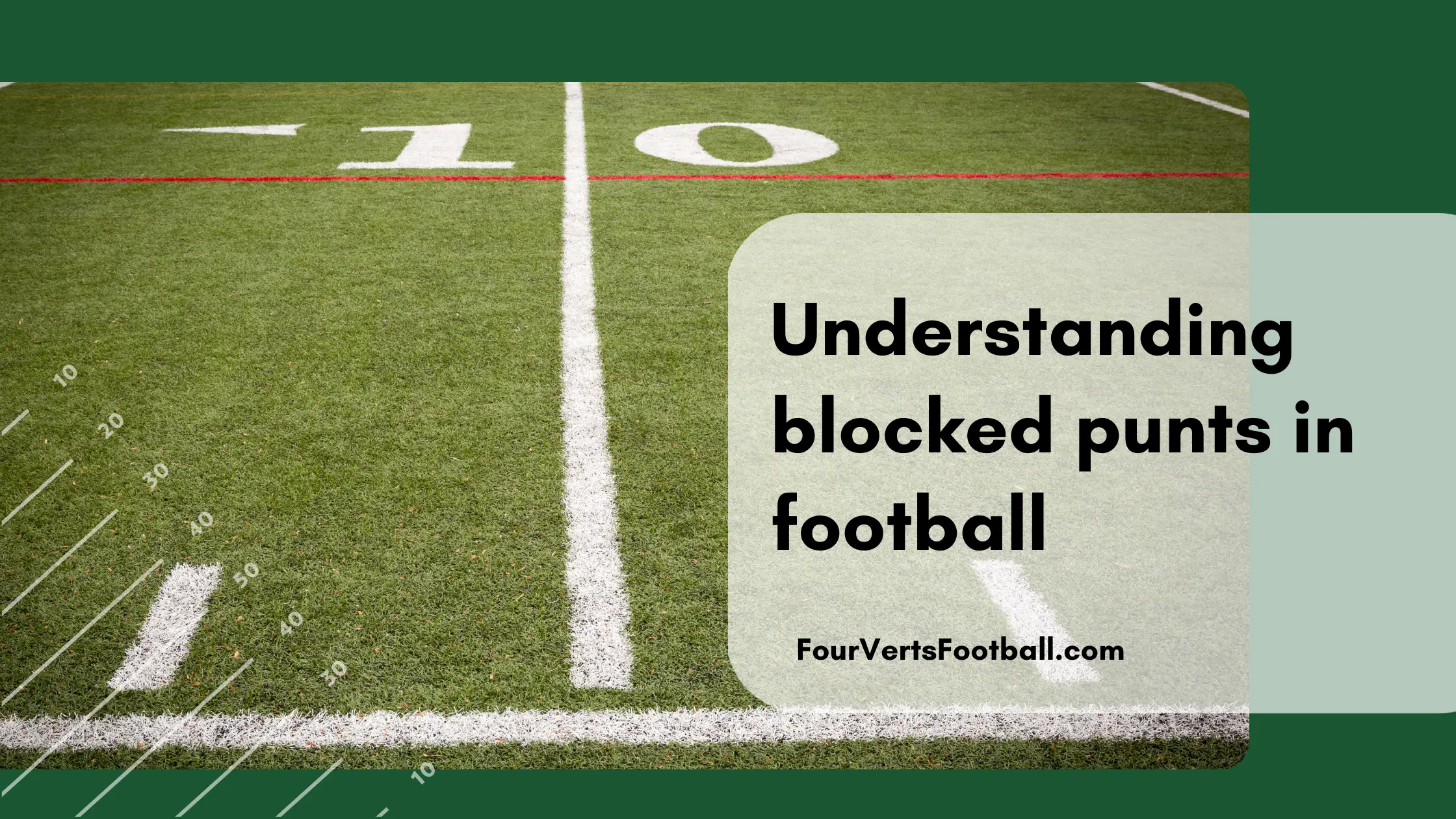A blocked punt in football occurs when players on the punt return team are able to get their hand on the ball immediately after it has been punted. If a punt is blocked and ends up behind the line of scrimmage either team can recover it. If it passes the line of scrimmage only the receiving team can recover the punt.
Blocked punts are going to have very different results depending on whether or not the ball crosses the line of scrimmage.
Blocked punts behind the line of scrimmage
When a blocked punt occurs behind the line of scrimmage either team is going to be able to recover the ball.
If the punt receiving team recovers the ball they will attempt to return it for a touchdown. The location a player on the return team is downed after recovering a blocked punt is going to be where they start their next drive.
Even if the player who recovers the blocked punt is downed immediately it will still result in noticeably better field position than if they did not block the punt.
If the punt team recovers a blocked punt behind the line of scrimmage they have a couple of options. First, they can try and progress the ball past the line of scrimmage.
If a punt is blocked behind the line of scrimmage the punting team can still pick up the ball and carry it or throw it for a first down. If they are able to get enough yards for a first down the punt team will maintain possession of the ball.
If a player on the punt team is tackled before the first down marker it will be a turnover on downs and the receiving team will get possession of the ball.
The other option for the punting team if the ball is blocked behind the line of scrimmage is to punt the ball again.
If the ball does not travel across the line of scrimmage then technically a punt has not yet occurred. This means it is legal for the punt team to punt the ball again if the first punt did not cross the line of scrimmage.
Most times a punt is blocked the punter is not going to have time to attempt a second one but every once and a while a punter will be able to pull this off.
Blocked punts past the line of scrimmage
When a punt is blocked or deflected and travels past the line of scrimmage only the team receiving the punt can recover the ball.
In this scenario, the ball will play out as it does on a usual punt. The receiving team can recover the ball and advance it until they are tackled or travel out of bounds.
Or the punting team can touch the ball and down it at their location. Though it is important to remember if a member of the return team touches the ball then either team can recover it.
Similar to a regular punt play if the returner touches the ball and doesn’t catch it either team can then recover it and assume possession.
For this reason, players on the receiving team must make sure to not touch the ball on a blocked punt that travels past the line of scrimmage.
Conclusion
I hope you enjoyed our guide to understanding blocked punts in football. If you want to learn more about punting in football we have plenty of content on our site.
Our articles on catching your own punts and describing the pooch punt are a great place to start.

